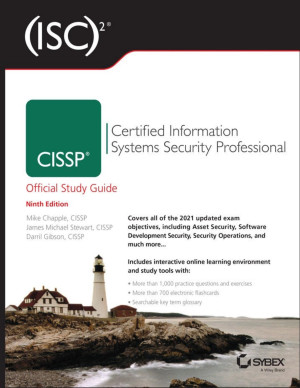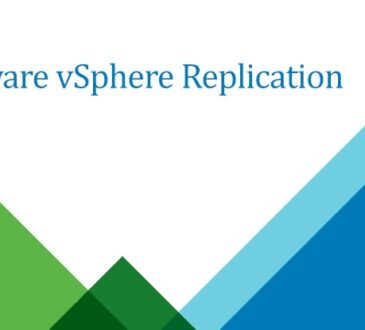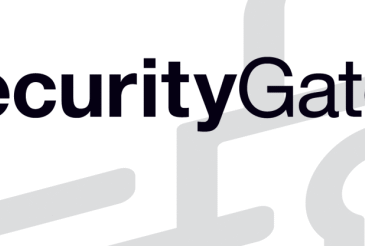(ISC)2 CISSP Certified Information Systems Security Professional Official Study Guide

The CISSP Certified Information Systems Security Professional Official Study Guide by Mike Chapple, James Michael Stewart, and Darril Gibson is a premier resource for individuals preparing for the highly respected CISSP certification exam. It provides comprehensive coverage of the eight domains outlined in the (ISC)² Common Body of Knowledge (CBK), focusing on equipping candidates with the knowledge and skills required to excel in the exam and their cybersecurity careers.
Overview of the Study Guide
This study guide offers a structured approach to mastering complex cybersecurity concepts, with real-world examples, exam-focused content, and practical advice. It balances theory and application, making it valuable for both exam preparation and professional reference.
Key Features
- Comprehensive Domain Coverage: Detailed chapters cover each of the eight CISSP domains:
- Security and Risk Management
- Asset Security
- Security Architecture and Engineering
- Communication and Network Security
- Identity and Access Management (IAM)
- Security Assessment and Testing
- Security Operations
- Software Development Security
- Exam Tips and Tricks: Insightful strategies for answering different types of questions on the CISSP exam.
- Hands-On Examples: Practical scenarios that illustrate how cybersecurity principles are applied in real-world situations.
- Practice Questions and Quizzes: Each chapter concludes with questions to test your understanding.
- Online Learning Resources: Access to additional practice exams, electronic flashcards, and an online glossary to reinforce learning.
Detailed Discussion of the CISSP Domains
1. Security and Risk Management
- Principles of security governance
- Legal, regulatory, and compliance frameworks
- Risk analysis and management techniques
- Policies, standards, and guidelines
2. Asset Security
- Data classification and handling
- Retention policies and secure data management
- Privacy principles and practices
3. Security Architecture and Engineering
- Secure design principles for systems and software
- Cryptographic methods and applications
- Vulnerability and resilience planning
4. Communication and Network Security
- Network architecture and design
- Secure network protocols and services
- Network attack mitigation
5. Identity and Access Management (IAM)
- Access control systems and methods
- Authentication mechanisms
- Federated identity and single sign-on (SSO)
6. Security Assessment and Testing
- Security control testing and auditing
- Vulnerability assessment techniques
- Penetration testing methodologies
7. Security Operations
- Incident response and forensic investigation
- Disaster recovery and business continuity planning
- Operational resilience strategies
8. Software Development Security
- Secure software development lifecycle (SDLC)
- Software vulnerability analysis
- Secure coding practices







Hey vmorecloud.com,
Did you know that top brands are now using AI-powered influencers to revolutionize their campaigns?
They’re blending the best of human appeal with the unmatched consistency and efficiency of AI.
And now, it’s YOUR turn to step into this exciting new era of marketing with AIfluencers!
Forget everything you know about traditional influencers—AI influencers are here, and they’re changing the game.
Imagine designing a virtual influencer who:
✅ Engages audiences 24/7 across platforms like Instagram, TikTok, and Facebook.
✅ Generates stunning headshots, posts, and videos without the need for costly photoshoots.
✅ Monetizes effortlessly through sponsored content, product promotions, and interactive chats: https://www.getprofitnow.info/aifluencer .
✅ Scales your website/brand presence globally with multilingual support and customizable personas.
With AIfluencers, you can:
Create, customize, and control AI-powered influencers for any niche or industry.
Charge for brand partnerships, lease your influencers, or sell their content directly.
Monetize interactions, from Q&A sessions to tailored product showcases, and watch the profits roll in.
AIfluencers offers limitless possibilities to create digital influencers that captivate, engage, and drive traffic/sales like never before.
Here’s what’s waiting for you:
A complete platform to build and manage AI influencers from scratch.
Tools to generate viral content for all social platforms effortlessly.
Monetization opportunities that help you grow your business 24/7.
Grab AIfluencers Now and Create Your First AI Influencer Today: https://www.getprofitnow.info/aifluencer !
The future of influencer marketing is here, and the brands who embrace it now will dominate their industries tomorrow. Don’t get left behind—start your AIfluencers journey today!
To Your Success,
Bruce Thomas
UNSUBSCRIBE: https://www.getprofitnow.info/unsubscribe/?d=vmorecloud.com
Address: 1805 Woodstock Drive
Pomona, CA 91766